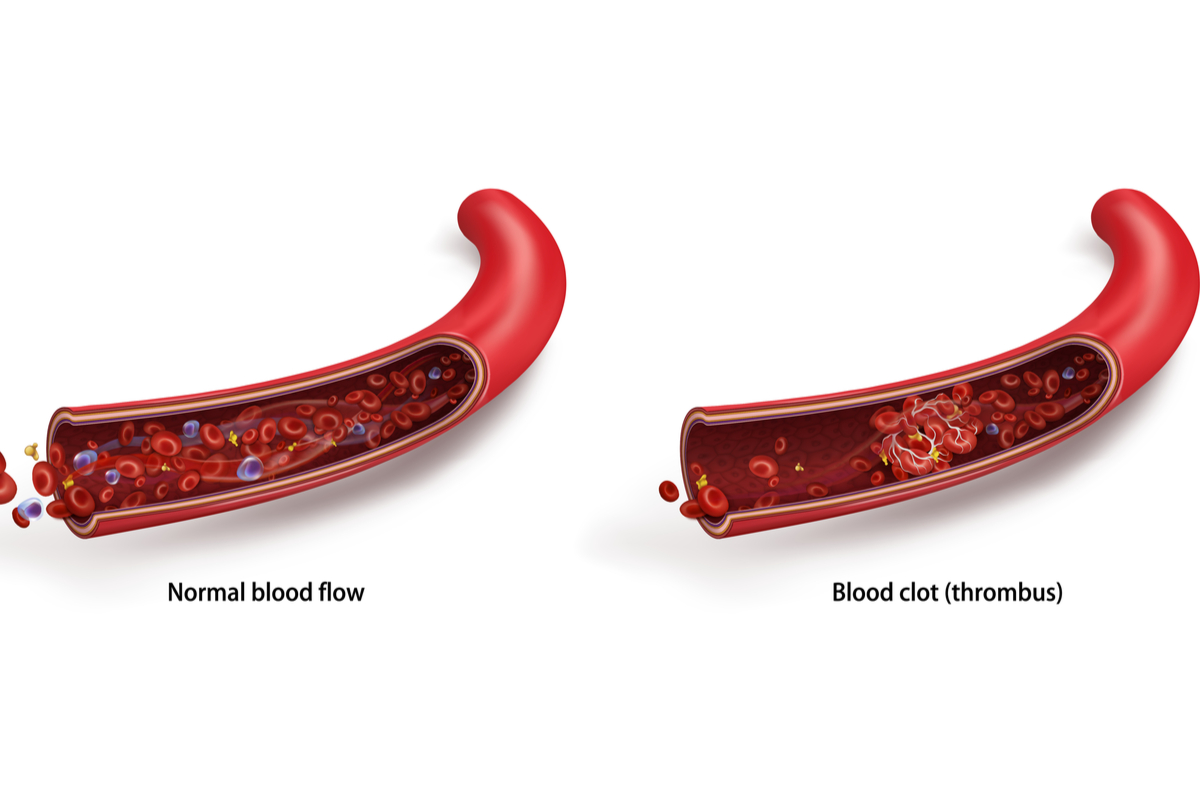A scratch on your hand? A nick while shaving? Worry not; the body stops the bleeding in a few minutes by forming a scab which eventually falls off by itself.
The scab, also called a clot, is a physiological function of the body to stop you from bleeding for a long period. It is a clump of platelets and fibrin forming a gel-like or semisolid mass which then arrests the bleeding. When it occurs in a part of the circulatory system, it’s called a thrombus.
Types:
When formed in an artery, it’s called arterial thrombus; when formed in a vein, it’s called a venous thrombus.
An arterial thrombus causes symptoms immediately and can cause drastic damage to the heart and lungs. A venous thrombus will do so more slowly.
Embolus is the name given to a thrombus which gets dislodged from its place and travels.
Who’s at risk?
Age, long hospital stay, trauma can predispose you to a blood clot. Lesser known causes are hormone replacement therapy, cancer, family history. Smoking, obesity could also put you at risk.
Warning signs:
The Brain: Dizziness, blurred vision, slurred speech, weakness. It could also result in a seizure.
The heart: It mimics a heart attack, causing severe chest pain, pain in the arm, excessive perspiration.
The lungs: Chest pains, breathlessness, dizziness, cough.
The abdomen: Belly ache, vomiting, bloating, bloody stools.
Kidneys: A blood clot in the kidneys can cause kidney failure, blood in urine, pain and swelling of lower limbs.
Arms and legs: A blood clot in the veins of the arms or legs is called a DVT (deep vein thrombosis). This is a very serious condition, as it can travel anywhere in your body, causing damage to the heart or lungs. It is a common complication of prolonged rest to the limbs, air travel- when you don’t move around. Some of the symptoms to be aware of are:
Swelling: in the area where the clot is located, as the flow of blood is obstructed, causing it to collect in an area.
Skin Discoloration: due to the blockage or damage to the vessel.
Warmth: the area will feel warmer to the touch as compared to other parts of the body.
Pain: Pain or soreness in the limb can indicate worsening of the clot and needs immediate attention. If accompanied with pain in chest or left arm, it could mean that the clot has travelled to the heart or lungs.
Difficulty in Breathing: This is a serious complication of a thrombosis, indicating involvement of the lungs or heart. It could be accompanied by sweating or a feeling of faintness.
Pitting oedema: Another sign of DVT, it is a collection of fluid in the affected part. On pressing with a finger, it forms a pit, hence the name.
Blood clot has recently been recognized as a complication of Covid. If you show any of these symptoms, you need to visit your physician at the earliest. Do not hesitate to seek advice.








